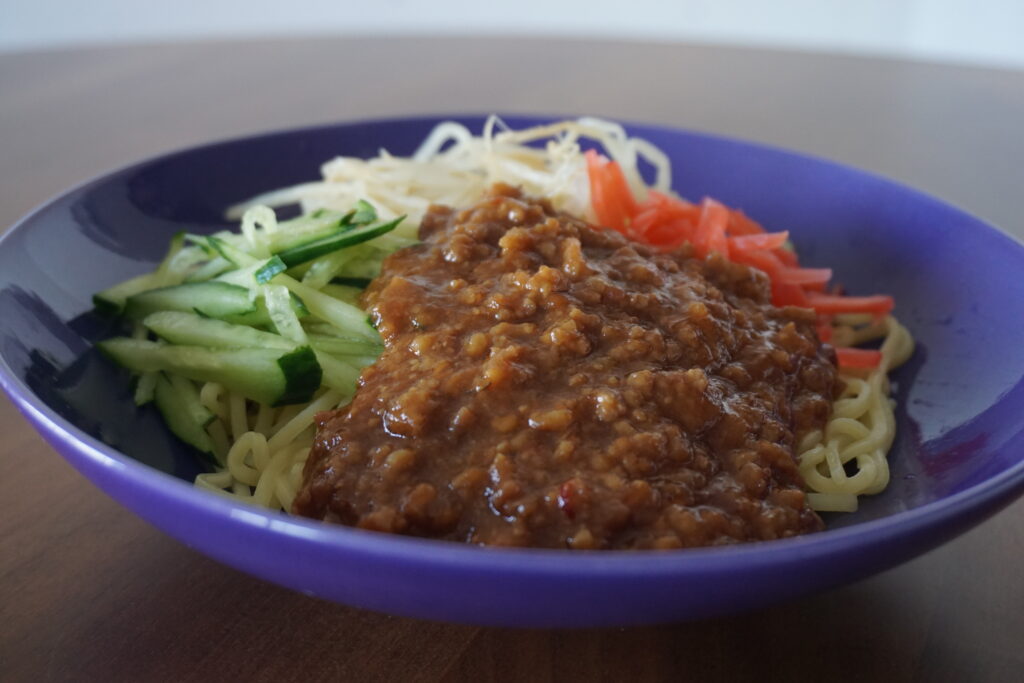
JAJAMEN(ジャージャー麺)
炸醤麺 = Zha jiang mian = soupless nikumiso ramen
Zha jiang mian is a noodle dish that originated in China. This dish is made of boiled noodles topped with zhajiang(=炸醤), a paste made from minced pork.
In China, noodle dishes are generally served with noodles and soup.
However, Zhajiang mian is unique in that it does not have soup.
This zha jiang mian recipe is one I have adapted to make it easy to make using ingredients available in Japan.
About the noodles used in Zha jiang mian
In China, zha jiang mian is made with 手擀面 (hand-cut noodles). These noodles are flatter than ramen noodles and whiter because they are not made with kansui (lye water).
This recipe uses ramen noodles, which is readily available at any supermarket in Japan.
Ramen noodles is made by kneading wheat flour with kansui (an alkaline solution containing sodium carbonate and potassium carbonate).
These noodles originated in China and are called chuka men (chuka = Chinese).
You can also use udon or kishimen noodles depending on your preference.
Regional variations in zhajiang fried sauce (=炸醤) Ingredients
- Shandong Province, China, where this dish originated
Minced pork, sweet flour paste (甜麺醤) - Beijing, China
Cubed pork, white leek, Chinese soybean miso (黄醤), and sweet flour paste (甜麺醤). - Guangdong, China
Chinese soybean miso (黄醤), and sweet flour paste (甜麺醤), ketchup
Depending on personal preference, chili peppers, chili bean paste, hoishin sauce, and Sichuan peppercorns may also be added. In either case, a lot of oil is used.
Chinese soybean miso (黄醤), and sweet flour paste (甜麺醤) are not commonly found in Japanese households, so I personally substitute them with red miso.
Topping
Cucumber is a must-have topping for this noodle dish.
In addition to cucumber, this recipe uses bean sprouts and pickled ginger.
Other ingredients that go well with zha jiang mian include green onions and edamame beans.
Dishes similar to zha jiang mian
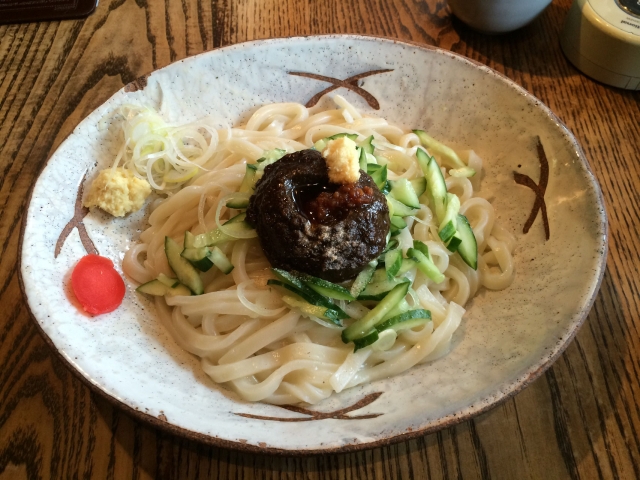
The distinctive feature of Morioka Jajamen in Iwate is the noodles. They use Kishimen (flat udon) instead of 手擀面 (hand-cut noodles).

Jajangmyeon is black in color because it uses black bean sauce(春醤) instead of sweet flour paste(甜麺醤). This has a sweet taste and not spicy.
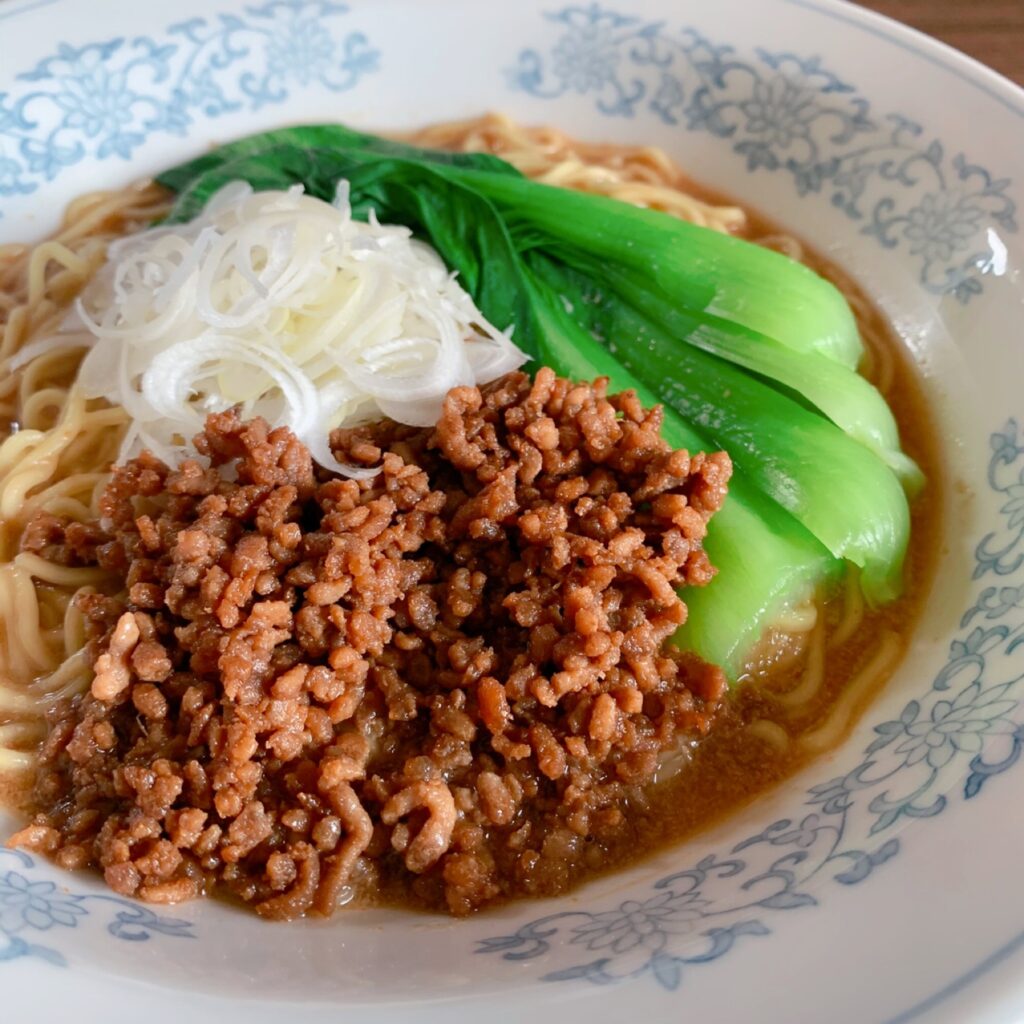
NUTRITION FACT : Zha jiang mian (Soupless Nikumiso Ramen)

- 2053 Calories Protein 97.5 g Total Fat 75.5 g Total carbohydrates 247.5 g Sodium 13.1 g
INGREDIENTS : Zha jiang mian (Soupless Nikumiso Ramen)
NIKU MISO
- Minced pork (300g)
- Onion (20g)
- Japanese white leek (20g)
- Garlic (8g)
- Ginger (8g)
- Chili bean sauce (Doubanjiang) (18g)
- Chili pepper (1 pinch)
- Sesame oil (12g)
- Pepper (moderate amount)
- ☆Oyster sauce (18g)
- ☆Soy sauce (12g)
- ☆Red miso (20g)
- ☆Grain Vinegar (20g)
- ☆Ketchup (10g)
- ☆Sugar (30g)
- ☆Sake (30g)
- Potato starch (4g)
- Water (100g)
ZHA JIANG MIAN
- Ramen noodles (3pieces/360g)
- Cucumber (90g)
- Bean sprouts (100g)
- Beni shoga (Pickled ginger) (appropriate amount)
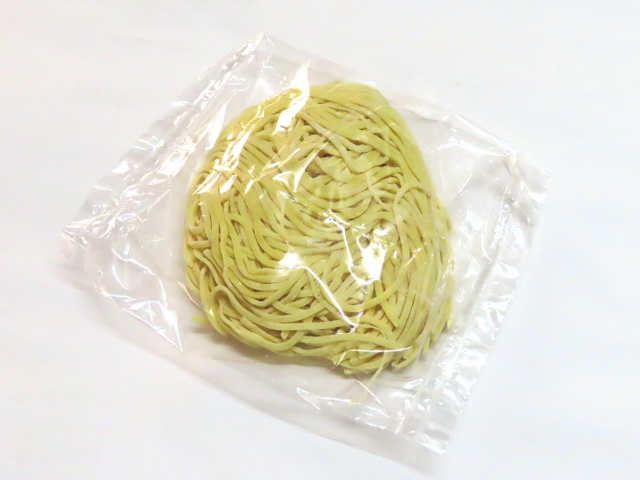
How to make Zha jiang mian (Soupless Nikumiso Ramen)
- Chop the onion, Japanese white leek, garlic and ginger.
- Heat sesame oil in a frying pan.
- Stir-fry minced pork, onion, Japanese white leek, garlic, ginger, chili bean sauce, and chili pepper until fragrant.
- Sprinkle with pepper.
- Mix oyster sauce, soy sauce, red miso, grain vinegar, ketchup, sugar, and sake together and add to the frying pan. (The resulting sauce is called “nikumiso = zhajiang”.)
- Turn off the heat and add the potato starch dissolved in water.
- Return the heat to the stove and heat.
- When the nikumiso thickens, turn off the heat.
- Boil the ramen noodles, drain the noodles in a colander. Follow the product’s boiling time.
- Wash the cucumber and cut it into thin strips.
- Boil the bean sprouts in the same pot as the ramen noodles and drain them.
- Place the cucumber, bean sprouts, pickled ginger, and nikumiso (= zhajiang, 炸醤) on top of the ramen noodles.
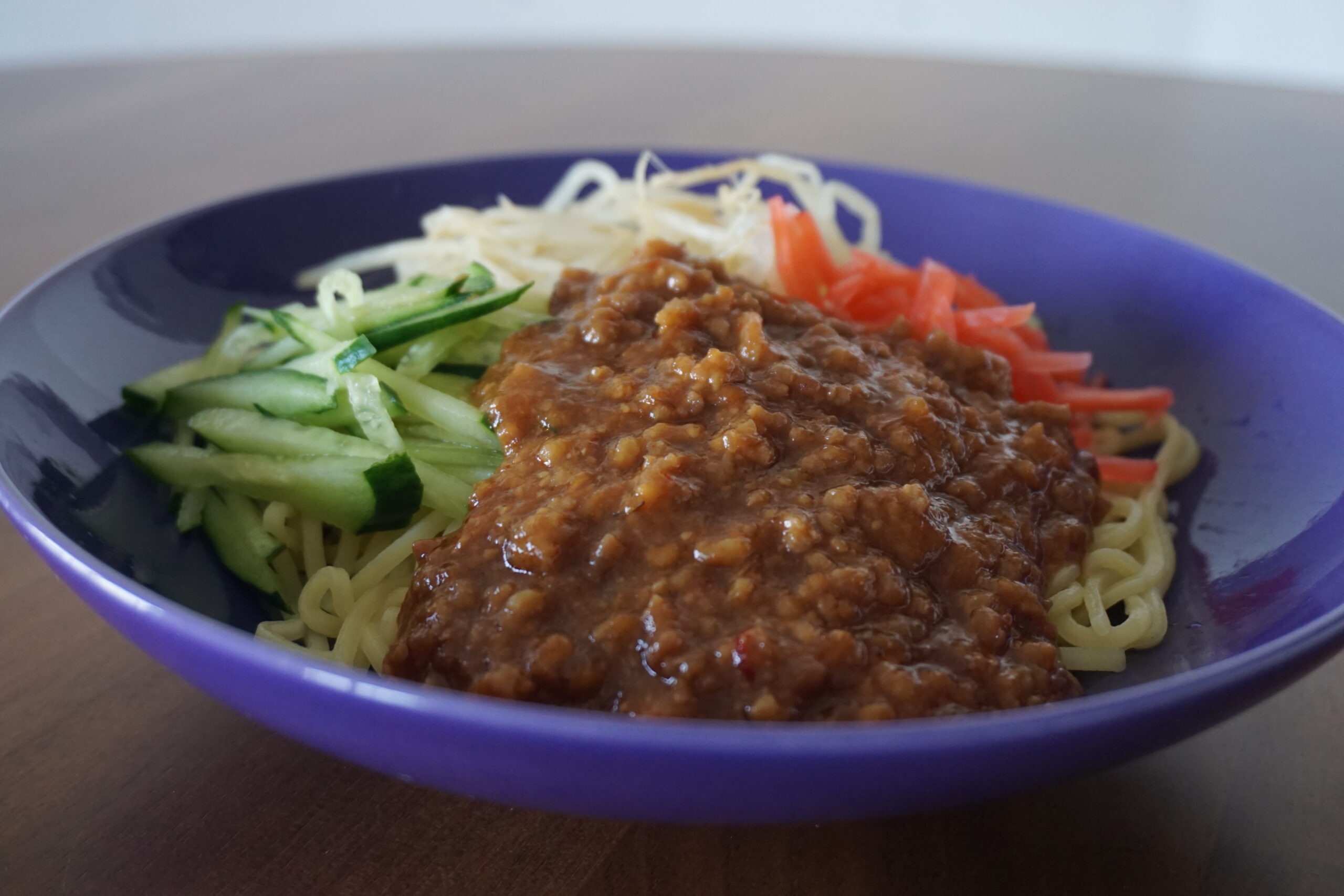


コメント